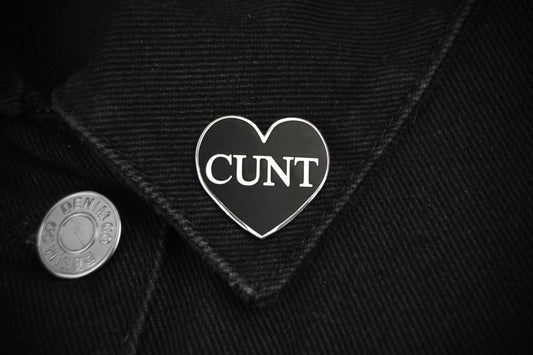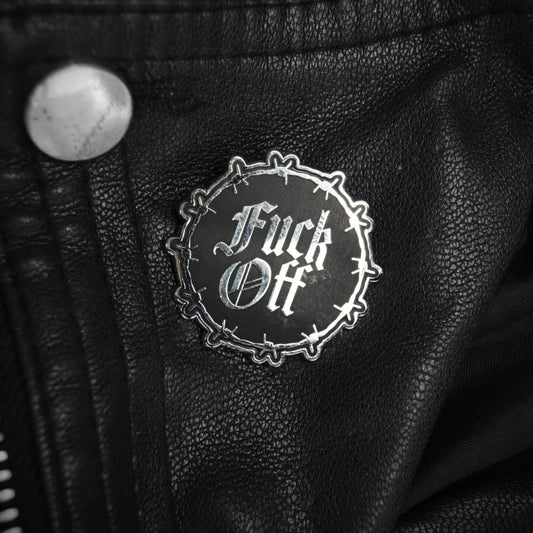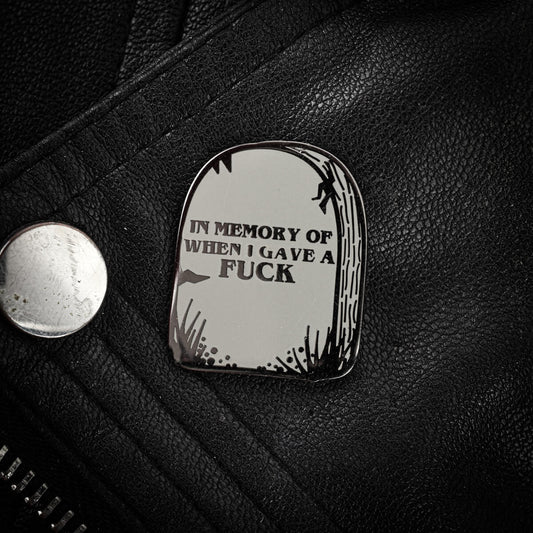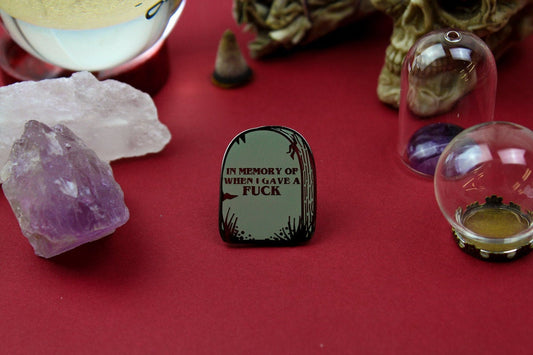
What Is the Goth Lifestyle and Philosophy?
Share
The goth lifestyle is much more than a striking aesthetic or a taste in music; it’s a deeply ingrained philosophy, one that has evolved since its origins in the post-punk scene of the late 1970s and early 1980s. At its core, goth embraces the beauty found in darkness, delving into life’s often overlooked themes—mortality, sorrow, melancholy—and finding solace in them. It's a culture that thrives on meaning drawn from the shadows, celebrating individualism, creative expression, and a strong sense of inclusivity.
Goths aren’t simply united by a shared appreciation for dark fashion and brooding music; they form a network of individuals who express themselves through art, literature, and an intricate appreciation for aesthetics. Whether drawing inspiration from gothic architecture or Victorian mourning attire, goths blend historical influences with contemporary flair, creating a movement that is simultaneously nostalgic and forward-thinking.
At the heart of the goth subculture lies a set of core beliefs that bind its members, no matter how they choose to outwardly express their gothic identity. Central to these principles is a celebration of individualism, a profound appreciation for aesthetics, and a firm commitment to inclusivity. Goths embrace these values as they shape their lives, weaving complexity and beauty into their everyday existence, and finding inspiration in life’s darker edges.
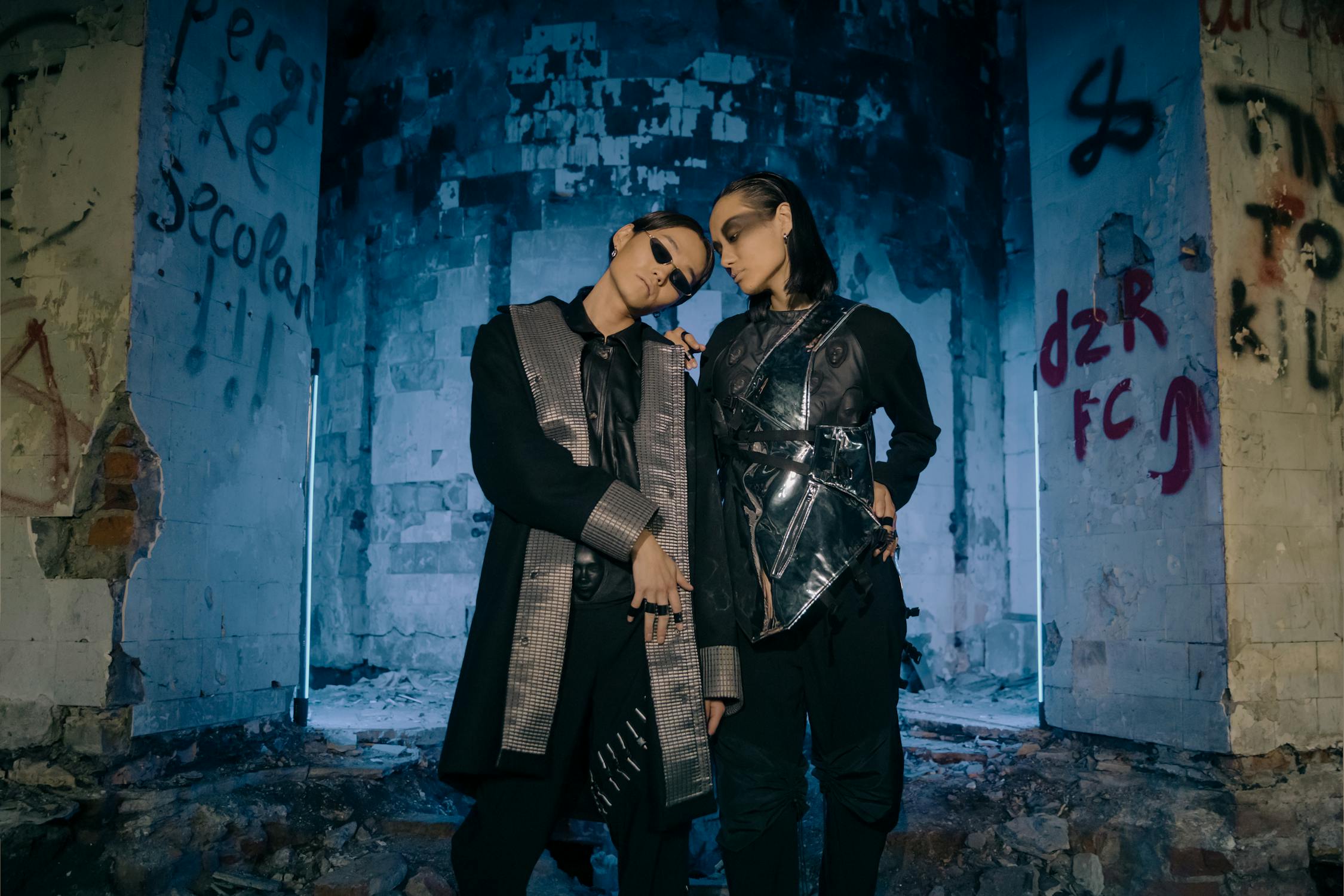
Individualism and Self-Expression
At the heart of goth philosophy lies a deep commitment to individualism and self-expression. For those who embrace the goth lifestyle, the freedom to express one’s true identity is not just encouraged—it’s essential. Whether through fashion, art, music, or other creative outlets, goths strive to present an authentic version of themselves, rejecting the conformity so often prized in mainstream culture. Instead of blending in, goths are encouraged to stand out, embrace their differences, and proudly showcase their unique perspectives.
This celebration of personal identity is evident in the rich diversity within the goth community itself. Whether identifying as cybergoth, romantic goth, or trad goth, the unifying principle remains the same: the freedom to explore and express one’s inner world without fear of judgement. In a culture where individuality is cherished, being different is not only accepted—it’s embraced with enthusiasm. The goth lifestyle offers a refuge for those who want to challenge societal norms and celebrate the beauty of standing apart.
Appreciation of the Aesthetic: Beauty in Darkness
A deep appreciation for the aesthetic runs through every facet of goth culture. Goths are known for their love of the macabre, and they find beauty in what others may see as bleak or unsettling. This is not about glorifying darkness for the sake of it but rather about recognising the full spectrum of human experience, including sorrow, loss, and decay, as essential elements of life. For goths, there is beauty in the imperfect and the broken—an old graveyard, a decaying building, or even a rainy, overcast day can evoke feelings of introspection and melancholy that are as valuable as joy and light.
The goth aesthetic is more than just black clothing and dramatic makeup—it’s a philosophy that acknowledges the duality of beauty and darkness. This can be seen in everything from the iconic fashion choices of goths, which often incorporate Victorian or mediaeval elements, to the music and literature that explore themes of death, love, and existential despair. Gothic art, architecture, and even literature are infused with this same reverence for the dark and mysterious, reinforcing goth’s commitment to finding beauty in places others may overlook.
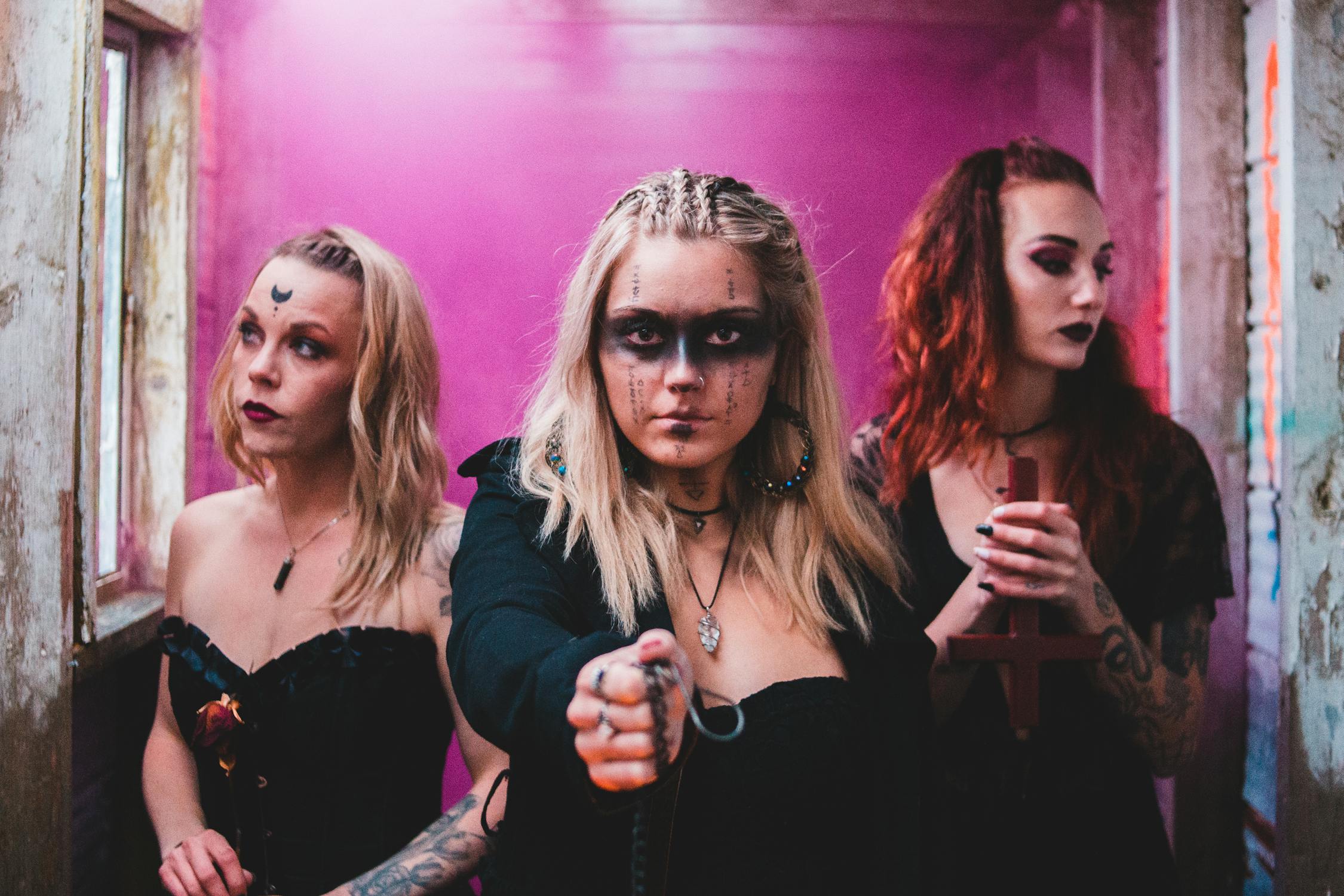
Acceptance and Inclusivity
Despite its often misunderstood exterior, goth culture is built on a foundation of acceptance and inclusivity. The goth community is known for welcoming individuals from all walks of life, regardless of their race, gender, sexuality, or background. It is a subculture that thrives on diversity, where differences are celebrated rather than shunned. This inclusivity allows goths to form strong bonds within their community, offering a safe space for people to be themselves without fear of judgement or exclusion.
Goths often find comfort in their shared understanding of life’s darker aspects, and this collective experience creates a sense of belonging. The subculture’s openness is perhaps one of its greatest strengths, as it allows for continual growth and adaptation, welcoming new voices and perspectives into the fold.
Goth Lifestyle Practices
The goth lifestyle extends beyond music and fashion—it permeates all aspects of daily life, creating a cohesive way of living that reflects goth philosophy. Whether it’s in the way goths decorate their homes or the types of social events they attend, the lifestyle practices of goths are a key part of how they express their identity.
For many goths, their aesthetic choices are not confined to nightclubs or concerts but are incorporated into their everyday lives. Homes may be decorated with dark, ornate furnishings, featuring items like candles, gothic sculptures, and Victorian-style furniture. These items reflect the goth love for history and the macabre, creating a personal space that mirrors their inner world.
Even in casual, everyday activities, goths may incorporate elements of their aesthetic. This might involve wearing subtle goth accessories or dressing in muted tones that reflect their love for the darker side of life. It’s a way of staying true to their identity even when the situation calls for something less dramatic than the full goth regalia seen at events or concerts.
Being part of the goth subculture often means participating in a variety of social events and gatherings that help to reinforce the sense of community. From weekly goth nights at local clubs to large-scale festivals like Wave-Gotik-Treffen in Germany, goths come together to celebrate their shared love for music, fashion, and culture. These events are often centred around live performances by goth bands, but they also include DJ sets, fashion shows, and art exhibitions that allow goths to connect with one another.
Community involvement is essential to the goth lifestyle, as it provides an opportunity for individuals to express themselves and connect with like-minded people. For many, these events are a place of refuge—a space where they can be fully themselves without fear of judgement or ridicule.
In addition to music and fashion, literature, art, and film play a significant role in goth culture. Goths are often drawn to the dark, brooding themes found in Gothic literature, such as the works of Edgar Allan Poe or Mary Shelley. These classic works, with their exploration of themes like death, madness, and the supernatural, resonate deeply with the goth community.
Art and film are also key components of goth life. Directors like Tim Burton and films like The Crow or Interview with the Vampire are held in high regard for their gothic aesthetic and dark, romantic themes. These cultural artefacts help goths to explore and express the philosophical ideas that underpin their subculture, providing a deeper connection to the themes of darkness and beauty.

Fashion as Expression
For goths, fashion is much more than just clothing—it is a fundamental form of self-expression. The way goths dress is a reflection of their inner identity, their love for dark aesthetics, and their commitment to the core tenets of goth philosophy.
Variations in Clothing, Makeup, and Accessories
While black is the dominant colour in goth fashion, the subculture’s sartorial choices are far from one-dimensional. Goth fashion is incredibly diverse, with different subcultures within the broader goth community adopting distinct styles. Traditional goths may opt for leather jackets, fishnets, and band t-shirts, while romantic goths lean towards flowing Victorian gowns and corsets. Cybergoths, on the other hand, incorporate neon colours, synthetic materials, and futuristic accessories into their look.
Makeup and accessories also play a critical role in goth fashion. Many goths use heavy makeup, including dark eyeliner, lipstick, and pale foundation, to create a dramatic and striking appearance. Chokers, cuffs, and lace gloves are common accessories, and DIY culture plays a significant role, with many goths creating or customising their own clothing and accessories to reflect their personal style.
DIY Culture
DIY culture is a key aspect of goth fashion and identity. Many goths take pride in creating their own clothing, jewellery, and accessories, often repurposing vintage or second-hand items to fit their aesthetic. This hands-on approach not only allows goths to express their individuality but also connects them to the punk roots of the subculture, where DIY ethics were central.
Whether it’s sewing patches onto a jacket or handcrafting a piece of gothic jewellery, the DIY ethos within goth culture encourages creativity and personal expression. It’s a way for goths to stand out and to contribute something unique to the subculture.
Music and Artistic Influence
Music is often seen as the beating heart of goth culture, and it plays a central role in defining the goth lifestyle and philosophy. The goth music scene is as diverse as the fashion, with genres ranging from gothic rock and darkwave to industrial and EBM (Electronic Body Music). Music is more than just a form of entertainment—it’s a way of expressing the deeper emotions and philosophical ideas that define goth culture.
Goth Music
The origins of goth music can be traced back to bands like Bauhaus, Siouxsie and the Banshees, and The Cure. These groups emerged from the post-punk scene in the late 1970s and early 1980s, helping to lay the groundwork for what would become gothic rock. Their music was characterised by its dark, introspective lyrics, atmospheric sound, and a blend of melancholy with a touch of romanticism. Songs like Bauhaus' "Bela Lugosi’s Dead" and The Cure’s "A Forest" set the tone for a generation of goth musicians and fans, who embraced the emotional depth and dramatic style of these bands.
As the goth scene grew, so did the variety of sounds associated with it. Darkwave, a subgenre that combines gothic rock with electronic elements, became a staple of the goth music scene. Bands like Clan of Xymox and Deine Lakaien brought synths and drum machines into the mix, creating a hauntingly beautiful soundscape that resonated deeply with goths. Industrial music also found its place within goth culture, with bands like Nine Inch Nails and Ministry pushing the boundaries of electronic and rock music, blending harsh, mechanical sounds with dark, often political themes.
Contemporary goth music has continued to evolve, with artists like Chelsea Wolfe and Zola Jesus incorporating elements of folk, experimental, and electronic music into their goth-inspired sound. Despite the evolution of the genre, the themes of alienation, existential despair, and the beauty found in darkness remain central to the music, making it a vital part of the goth identity.
Personal and Community Identity
For goths, music is more than just a hobby—it’s a form of self-identification and a central component of community life. The shared experience of listening to and discussing goth music helps to build a sense of camaraderie among members of the subculture. Concerts, festivals, and club nights centred around goth music serve as cultural hubs where goths can connect, express themselves, and celebrate their shared love for the genre.
These events are not just about the music; they are about belonging. Whether it’s at a goth club night where everyone dresses to impress or at a festival like Wave-Gotik-Treffen in Leipzig, these gatherings offer goths a space to feel understood and accepted. The music, with its focus on dark, introspective themes, allows individuals to explore their emotions and experiences in a way that is cathartic and unifying.
The influence of goth music also extends beyond the community. It has been an important factor in shaping the visual and artistic identity of the subculture. Many goth bands are known for their striking album art, often featuring dark, surreal, or occult imagery that enhances the emotional experience of the music. Logos, album covers, and music videos all contribute to the broader aesthetic that goths embrace.

Social Aspects
The goth lifestyle is deeply rooted in the concept of community. Although goths celebrate individualism, the subculture itself thrives on connection, whether through real-life gatherings or online platforms. The social side of goth life is a vital aspect of the experience, allowing goths to build friendships, find acceptance, and engage with others who share their passion for the dark and the mysterious.
Goth as a Supportive Community
At its best, goth culture provides a safe and welcoming space for people who may feel like outsiders in mainstream society. The goth community is often described as supportive and inclusive, creating an environment where differences are celebrated. Many goths find that their local or online goth community becomes a second family—a place where they can express themselves without fear of judgement and where friendships are built on mutual respect and shared values.
This sense of community is particularly important for individuals who may have experienced bullying, alienation, or misunderstanding in other parts of their lives. The goth subculture offers an alternative space where the weird, the macabre, and the different are embraced, providing a sense of belonging that can be difficult to find elsewhere.
Clubs and Gatherings
Clubs, concerts, and gatherings play a key role in goth social life. In cities around the world, goth clubs are places where goths can meet, dance, and enjoy the music that defines their subculture. These clubs often feature a combination of live performances by goth bands and DJ sets playing classic goth rock, industrial, and darkwave. For many goths, these nights out are an opportunity to showcase their fashion, meet like-minded individuals, and immerse themselves in the music they love.
In addition to regular club nights, festivals such as M’era Luna and Castle Party draw thousands of goths from around the world to celebrate their shared culture. These festivals are not only about the music but also about art exhibitions, fashion shows, and workshops that allow attendees to engage with the broader goth culture. They serve as cultural hubs where goths can experience the full spectrum of their subculture, from music to visual art to fashion.
Online Communities
While in-person gatherings remain central to goth life, the rise of online communities has allowed goth culture to thrive in the digital space. Websites like Gothic.net and forums like TheDarkSide serve as meeting places for goths to discuss music, fashion, and philosophy. Social media platforms, especially Instagram and Tumblr, have become crucial tools for goths to share their aesthetic and connect with others. These platforms allow goth culture to transcend geographical boundaries, ensuring that even those who may feel isolated in their local communities can still find connection and validation online.
Online communities also help to perpetuate the DIY ethos of goth culture, with many goths sharing tips on creating custom clothing, makeup tutorials, and music recommendations. The internet has become a powerful tool for keeping goth culture vibrant and accessible, allowing it to adapt to new generations of followers.
Challenges
Despite its enduring popularity, goth culture has often been the subject of misunderstanding and misrepresentation. From assumptions that goths are morbid or obsessed with death to more extreme misconceptions that link goth to antisocial behaviour, goths often find themselves navigating prejudice and ignorance in broader society.
Misunderstandings About the Goth Lifestyle
One of the most pervasive misconceptions about goth is that it is inherently negative or depressive. While goth culture does embrace themes of sorrow, loss, and death, it does so in a way that seeks to understand and appreciate these experiences rather than dwell on them. For many goths, the philosophy is about finding beauty in the darker parts of life and embracing the full range of human emotions.
Another common misunderstanding is that goths are associated with violence or antisocial behaviour. This stereotype is often fuelled by the dark, sometimes unsettling imagery associated with goth music and fashion. In reality, goths tend to be peaceful and introspective, with the community prioritising inclusivity, acceptance, and emotional depth over aggression.
Challenges Faced by Goths in Broader Society
Unfortunately, goths often face prejudice and stereotyping due to their unconventional appearance and lifestyle. In schools, workplaces, and even in public, goths may be subject to bullying or harassment simply for dressing differently or expressing themselves in a way that is outside the norm. This can create challenges for goths who feel they must constantly justify or explain their lifestyle to those who don’t understand it.
However, goths have found ways to navigate these challenges, often turning to their community for support. The inclusive and accepting nature of goth culture provides a buffer against the prejudice goths may face in broader society. Many goths also use their fashion, music, and art as forms of resistance, reclaiming their identity in the face of societal pressure to conform.
The goth lifestyle is a rich and complex tapestry of values, aesthetics, and community. At its core, goth is about individual expression, an appreciation for the beauty in darkness, and a commitment to inclusivity. These values are reflected in the way goths live their lives—from the music they listen to and the clothes they wear, to the art they create and the communities they build.
Goth culture has proven to be enduring, evolving over the decades while staying true to its philosophical roots. Whether through music, fashion, or the connections forged within the community, goth offers a space for individuals to explore the full range of human experience—both the light and the dark. As society continues to change, goth culture will no doubt adapt and thrive, continuing to offer a home to those who find meaning in its philosophy and lifestyle.


